The Magellan Penguins are migratory sea birds that arrive during Spring at the Patagonian coasts
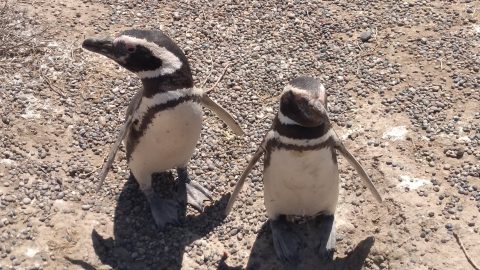
During the cold months they travel more than 3000 Km. up to the Brazilian coasts in search of warmer waters.
They build their nests near the coast and under the bushes because the soil is easier to be handled there. Many times, the same family returns to the same nest left behind the year before. Penguins are monogamous and do not engage in infidelity!
Males and females share all the tasks: they build their nest together, they look after and defend it, as well as they incubate the eggs in collaboration. The same happens at the moment of feeding, taking turns to do it.
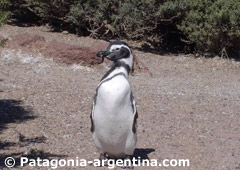 The period of courtship and hatch is exhausting for the penguins: they remain in land without eating and they only go to the sea in order to drink. Each female puts generally two eggs that are incubated during forty days, starting the first days of October.
The period of courtship and hatch is exhausting for the penguins: they remain in land without eating and they only go to the sea in order to drink. Each female puts generally two eggs that are incubated during forty days, starting the first days of October.
The baby penguins are born during November, covered by a layer of very smooth gray feathers, which they change later in February. They acquire their definitive plumage only a year after that.
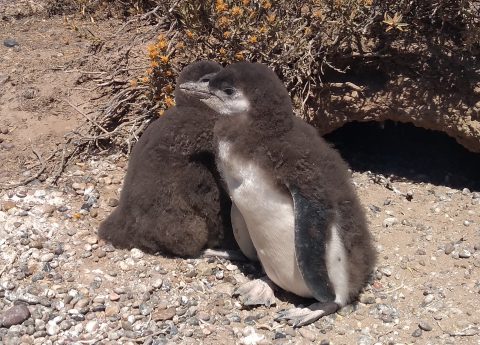
At the Punta Tombo Magellan Penguins Colony, more than a million penguins gather every year.
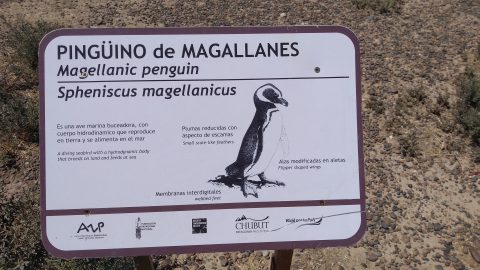
They feed mainly with small fish and squid. Their habitat is the water, where they are expert swimmers, able to get as far as 7 to 8 kilometers in an hour, using their fins to gain momentum and the feet as a rudder.
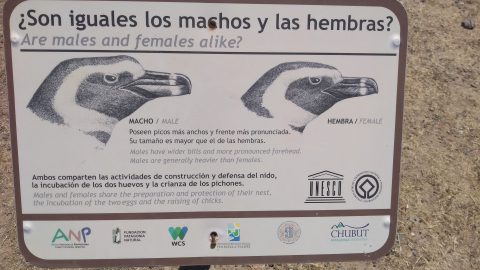
The males weigh about 5 kilos and are bigger than the females. And they are very conceited too! They spend lots of time looking after their feathers trying also to enhance their impermeability.
Penguins’ natural enemies are the petrels and orcas. But, sad to say, their biggest predator is the man with the fishing nets, fuel that gets spilled from ships as well as petrol. The petrol brings the isolating effect of the feathers useless, thus making the animal unable to swim in cold waters. The penguin then, forced to remain outside the waters, dies by starvation and intoxication.























